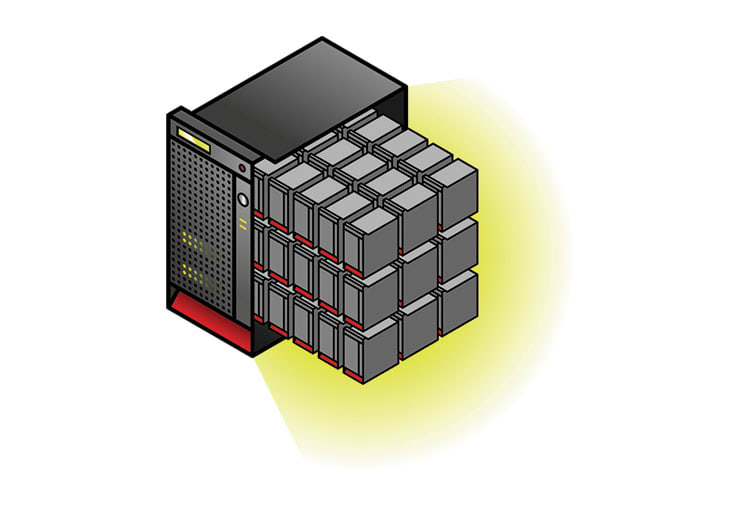Each of these provides users with a different level of security when conducting business operations via the internet. Furthermore, the leading web hosting companies provide users with different packages that employ one—or a combination of both—of these technologies.
First things first: What is a bare metal server?
A bare metal configuration is a physical server dedicated to a single organization or customer; no one else has access to those resources, so there is no one to throw off your online project’s stability. This allows for more processing power, a much higher level of security, and overall enhanced performance. This option is ideal when organizations are restricted by compliance measures, which typically require strict data security and privacy controls. Through isolation, bare metal servers give customers complete control of a server's physical resources, with hosting typically billed on a monthly basis.
Hosting servers in a bare metal cloud requires a high—albeit predictable—cost per month, and the resources you pay for may be underutilized and possibly even wasted. That said, if an organization requires the security and performance of a dedicated physical server, leasing a bare metal server is really the only option. Security, performance, and support options vary depending on the bare metal hosting provider, so shop wisely. Some may provide complete turnkey management and maintenance services, while others only contribute the server, internet connection, on-site security, and limited support, requiring a dedicated IT staff on your end to perform administrative and development duties. iPage, for example, has an advanced security system that has been applauded by security experts and is highly trusted by users.
The advantages of bare metal servers are:
- More processing power
- Security and privacy
- Better disk/network performance
- Complete control and isolation of a server's physical resources
- No financial surprises as hosting is typically billed on a monthly basis.
- Conceptual visual of a data center

Understanding Virtualization: The Hypervisor
In order to understand virtualization, you need tt understand the role of the hypervisor. Think of the hypervisor—also known as a virtual machine manager—as a layer that sits between the physical hardware of the bare metal server and the operating system. This layer has the ability to create multiple operating system instances, and therefore multiple isolated virtual server environments. Each one of these virtual servers can then be leased out to customers—a process known as multi-tenancy. Hypervisors are key to virtualization and cloud computing at large. If the bare metal server is the apartment complex, the hypervisor is the leasing agent.
So What Exactly is Virtualization?
Virtualization is the method of dividing a bare metal server into several virtual private servers (VPSs). This is most appropriately used in situations that require horizontal scalability, such as with cloud software or a website receiving a high volume of traffic. Virtual server hosting is best for users who want quick scalability over pure performance. For example, online retailers that expect traffic spikes during the holiday season are well-suited for a virtualized solution. VPS offerings are typically charged for the amount of server resources used per billing period, including with industry leaders such as Bluehost.
Virtualization and virtual server hosting are best suited for customers that require the flexibility to vary their usage. The best analogy is that of a public utility such as electricity; your electric bill might fluctuate over the course of a year due to changes in usage patterns. Similarly, organizations that expect to scale their server resources up or down quickly due to fluctuating traffic are best suited for a virtual server hosting solution. This gives them the ability to control their costs by paying only for what resources were used—no more, no less.
It’s important to note, though, improper budgeting of VPS resources can result in ballooning hosting costs, as infinite scalability has its price. Because billing is based on metered, on-demand use, a peak in traffic might not affect server performance, but may impact the customer's bill.
The advantages of virtualization are:
- Quick horizontal scalability – whenever more server space is required it is easy to provide additional virtual servers.- Flexibility for varied usage and fluctuating traffic.- Ability to control costs, since virtual servers charge only for the amount of resources used per billing period.
For some popular web hosting providers that offer virtual and bare-metal server options, please check out our web hosting company reviews.

